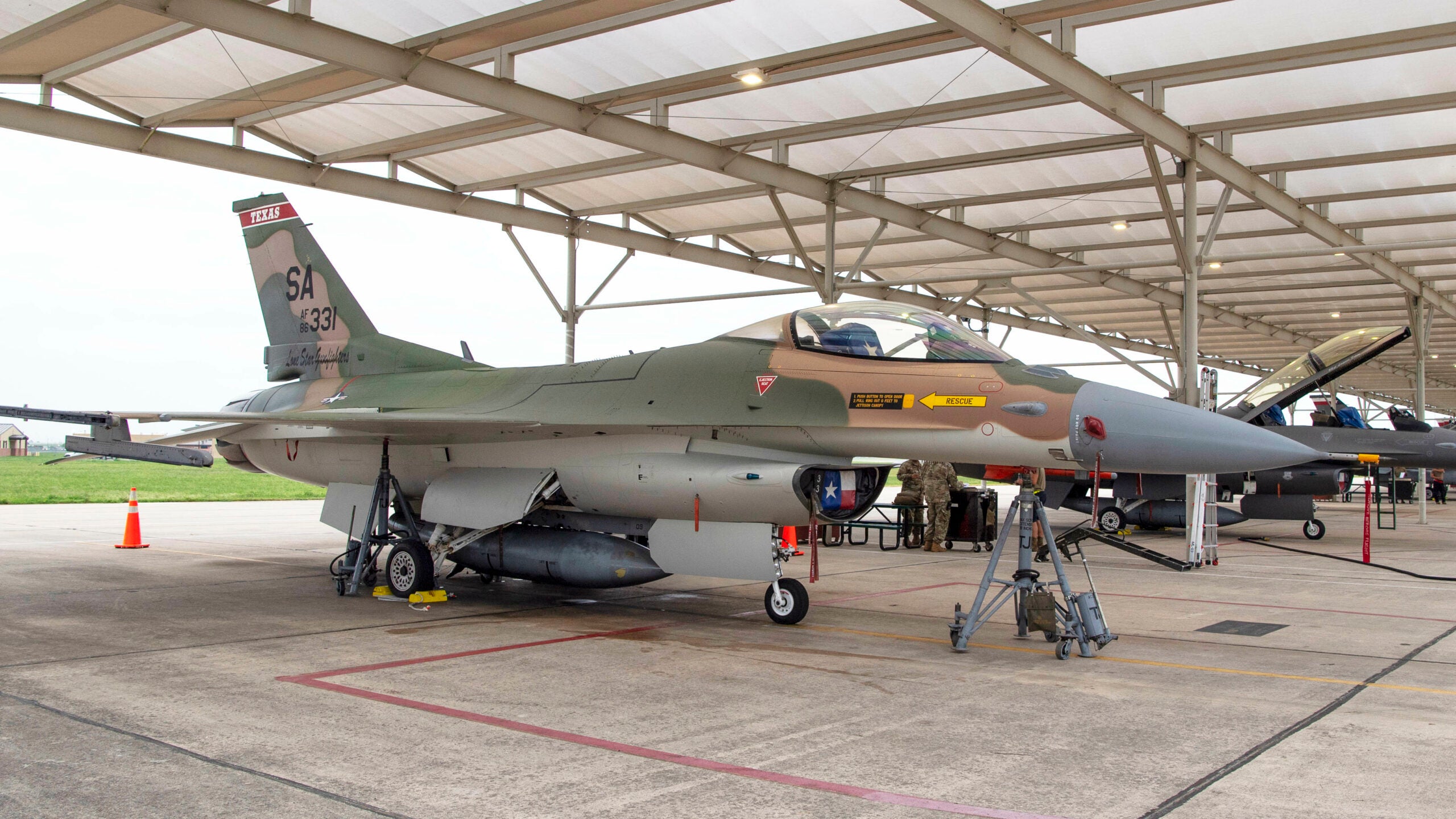The latest in a long line of U.S. Air Force heritage schemes is a special one, indeed, recalling the service’s combat during the Vietnam War, when hundreds of aircraft were adorned in these shades of green and tan. While the Southeast Asia camouflage scheme is a well-known one, this is very likely the first time an F-16 fighter jet has appeared in these colors.
Photos were released by the Department of Defense today showing the specially prepared Block 30 F-16C serial number 86-0331 from the 149th Fighter Wing’s 182nd Fighter Squadron, Texas Air National Guard, at Joint Base San Antonio-Lackland. The non-standard scheme has been applied to mark the 25th anniversary of the wing being redesignated from the 149th Fighter Group, an event officially marked last October.
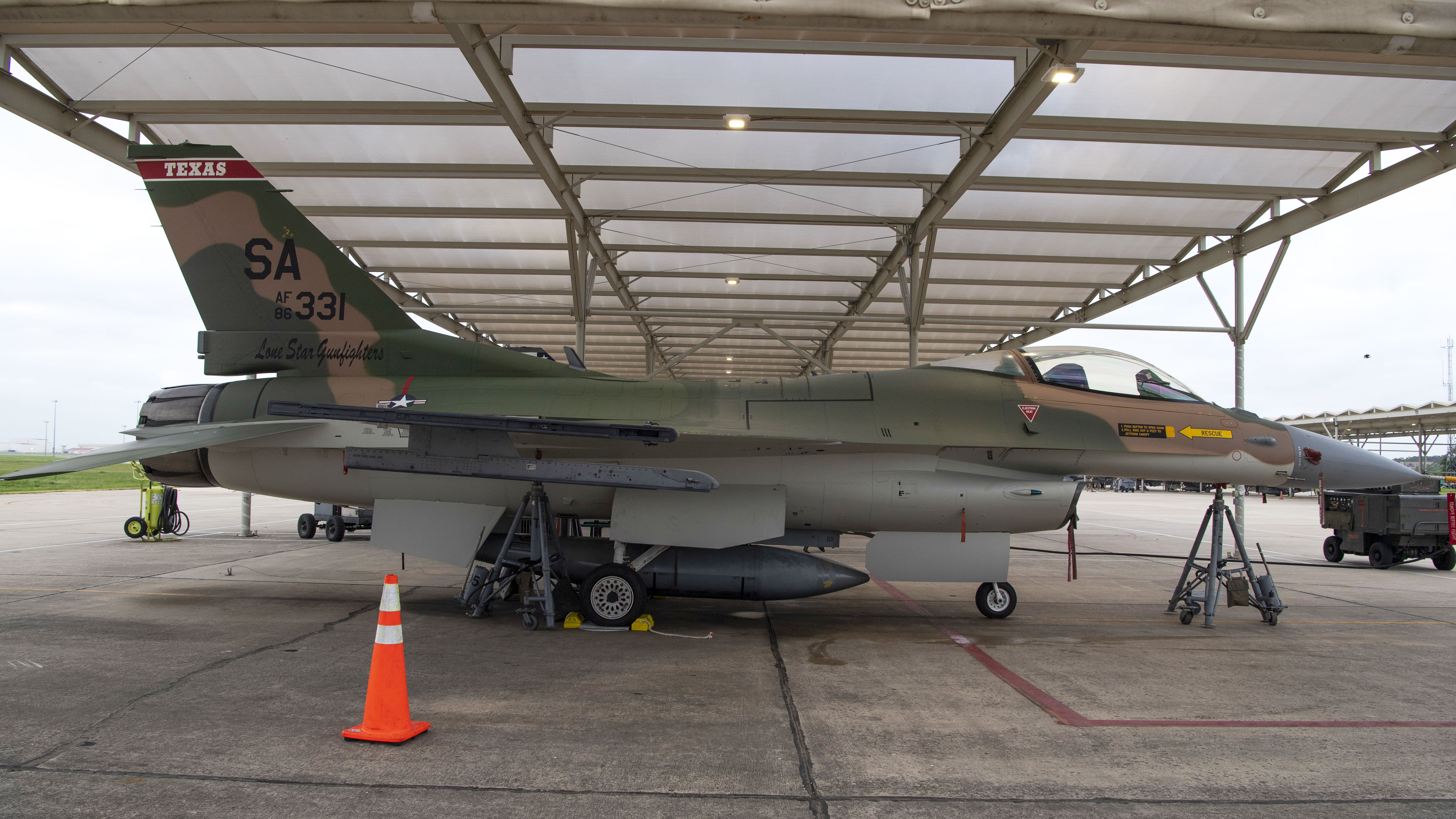
While the Vietnam-era colors look striking on the F-16, the 149th Fighter Wing didn’t actually serve in the Southeast Asian campaign. That said, its combat record is impressive, having originally been stood up in 1943 to fight in the European Theater during World War II.
After the war, the wing’s component 396th Fighter Squadron was inactivated and then reconstituted as the 182nd Fighter Squadron, assigned to the Texas Air National Guard. Flying the F-84E Thunderjet in Korea, the 182nd became the first Guard unit to shoot down a MiG-15 in that conflict.

In 1960, the unit was reorganized as the 149th Fighter Group and it continued to fly a range of fighters — including F-102A Delta Daggers, F-100D Super Sabres, and F-4C Phantom IIs — until re-equipping with its current mount, the F-16, in 1986. Since 1999, the 149th has served as the Formal Training Unit (FTU) for Air National Guard F-16 pilots under Air Education and Training Command.
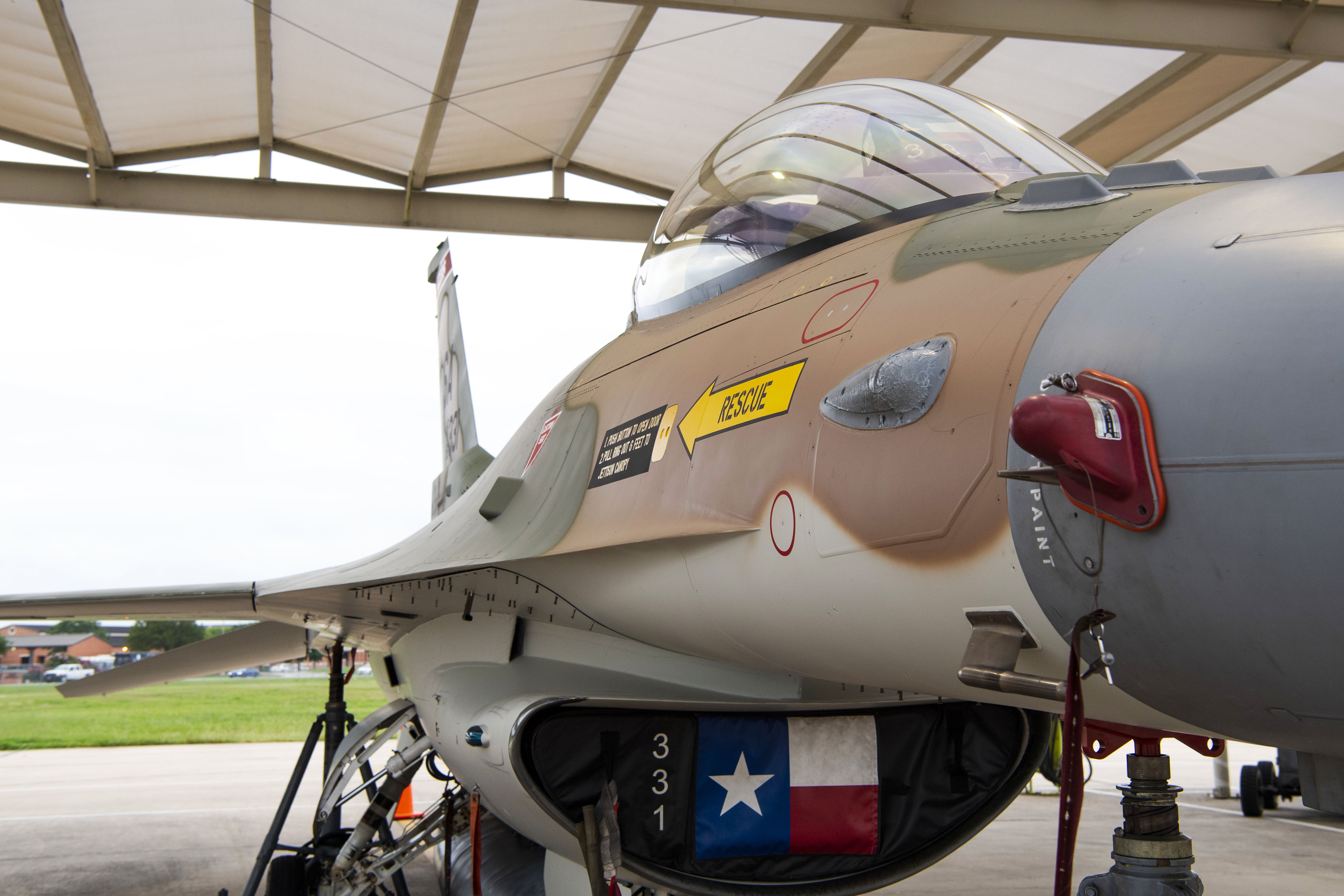
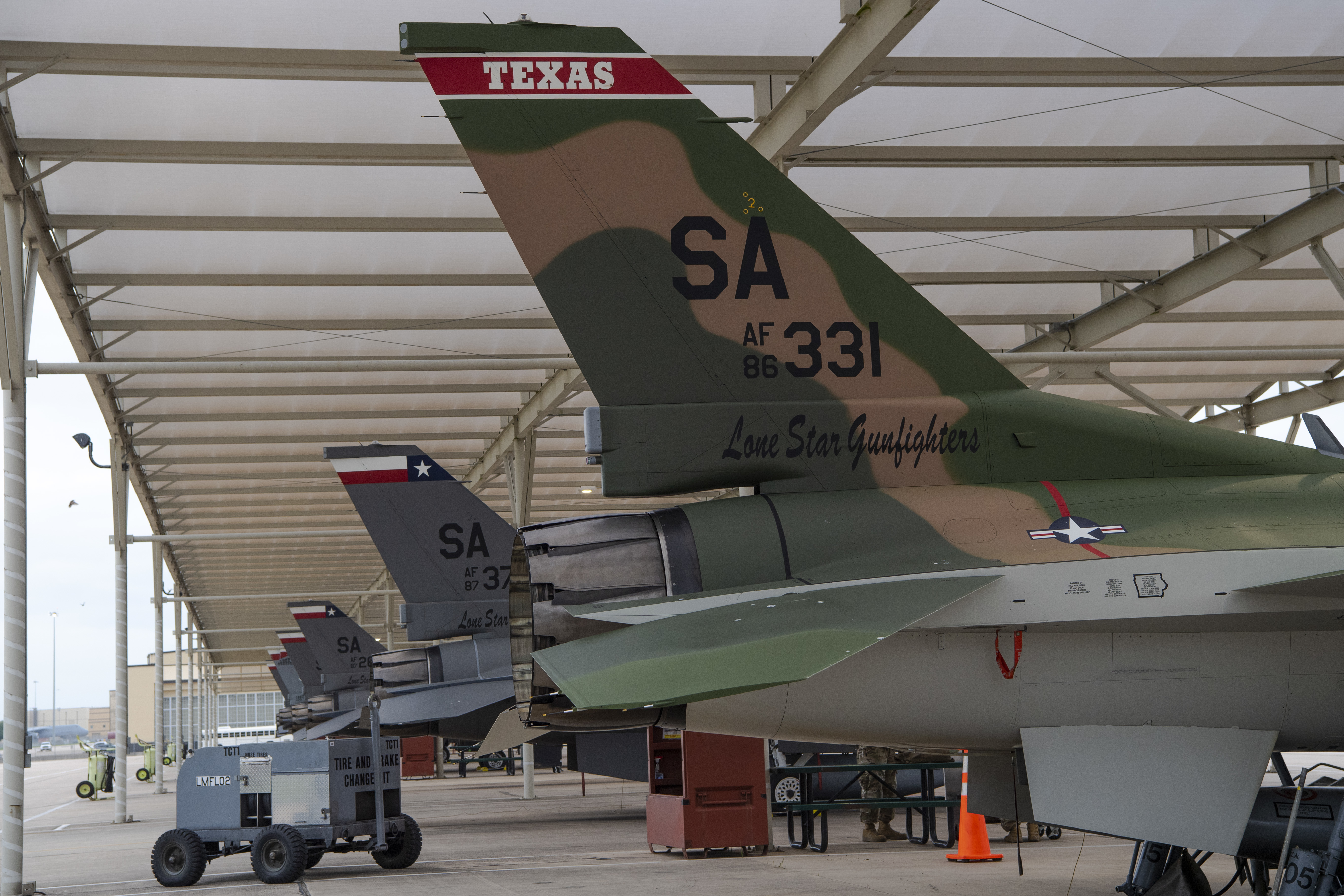
Another one of the 149th Fighter Wing’s specially painted F-16s was the subject of a recent innovation, when the wing unveiled a unique robotic system used to wash down its fighters keep them free of corrosion and extend their lifespan. You can read more about that proof of concept, and how it could also be rolled out to other Air Force units, in this previous story.
The new-look Texan Viper is actually part of an expanding repertoire of Air Force equipment to appear in the SEA scheme. Most recently, an A-10C from the Warthog Demo Team at Davis-Monthan Air Force Base emerged wearing the pattern, a story The War Zone covered here. Before that, a T-38C jet trainer wore the scheme, as did a QF-4 demo jet prior to the type’s retirement. A UH-1N Twin Huey helicopter also appeared with this pattern last year.

Meanwhile, for Viper afficionados, now is a particularly good time for variety among Air Force units, with not only unique special liveries to mark different anniversaries, but also some of the most flamboyant aggressor schemes that we have seen in recent years. As for the SEA scheme of the 149th Fighter Wing, perhaps the closest other in-service Viper camouflage is that applied to the Venezuelan fleet of F-16A/Bs, that country’s surviving jets operating in similar, but different, tones.
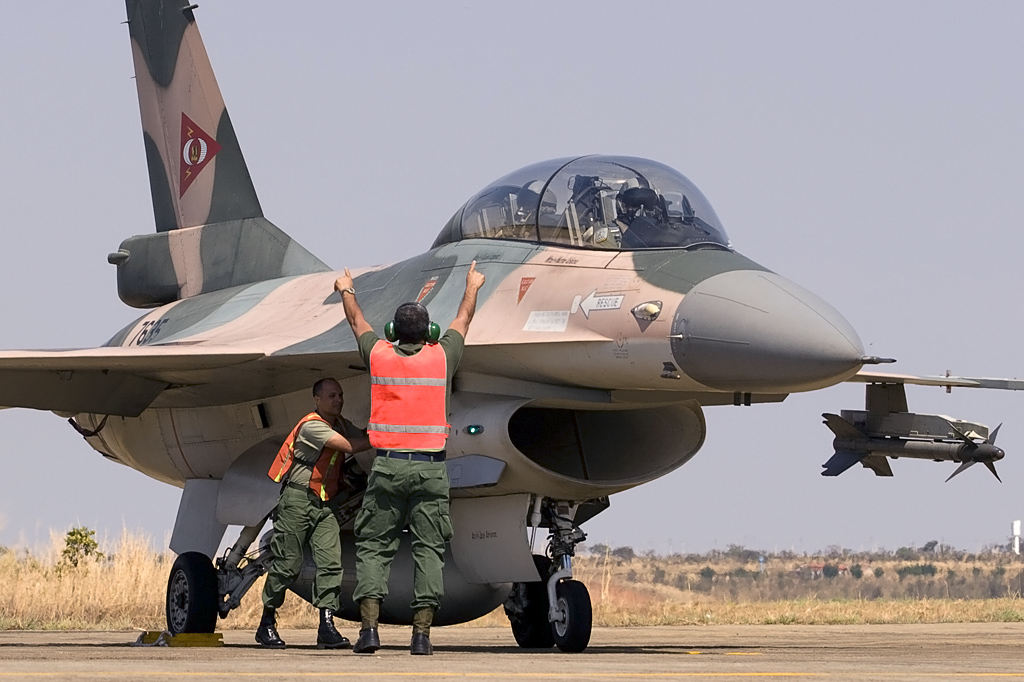
There’s no doubt that heritage schemes like this resonate with the public and engender pride within Air Force units. As the Air Force’s last serving POW — from Desert Storm in 1991 — retires, this particular jet is also a reminder of the many airmen who were Killed in Action or became Prisoners of War during the long conflict in Southeast Asia.
Contact the author: thomas@thedrive.com
